The Nomad 3 Series is Outrider’s latest creation, a blend of torque and speed… it sits half way between the Alpha and the Horizon models which offer 45 mph and 25 mph top speeds respectively based on their reduction gear box settings (5 to 1 and 15 to 1 respectively). The Nomad tops out around 35 mph offering a 9 to 1 reduction, note that it ships set to 20 mph top speed for legal street use as a Class 2 electric bike just like the other Outrider models. This electric recumbent trike is great for light trails or roads, they compare it to rally cross cars that can handle off-road use at speed… and just like the Alpha, it can be outfitted with lights and turn signals for use as a moped neighborhood electric vehicle if you’re looking for an efficient, long range commuter. The Nomad offers the same adjustable boom, seat angle and position, optional head rest and plush touch points as the others in the latest series for 2016.
I love that Outrider is expanding their line and feel that the Nomad strikes a perfect balance for the type of riding I enjoy. Frankly, 35 mph is fast enough for commuting and urban use in my book… in large part because my back and neck are sensitive to vibration. looking back to the original Outrider models, there was a super high speed Alpha with no suspension and the Horizon which first introduced it but seemed more focused on adaptive needs like hand cycling. Now that all of the models offer suspension and build on the same chassis, the question becomes “how much power vs. speed do you need”. I’ve found that a bit less speed translates to longer range (Zach said the 330 option with a ~3 kilowatt hour battery can get ~120 miles per charge). It’s great that you can choose weight and cost vs. range with 2 to 4 kwh options and I’d really think the decision over before pulling the trigger on one of these bikes because it’s way less expensive and time consuming to have the pack installed at time of purchase… apparently you have to send it back to the company to have them install additional batteries if you change your mind in the future.
Operating the trike feels much like a car, more so than other ebikes I’ve been testing. You sit down, reach back with your left hand and turn on the ignition key. The Cycle Analyst 3 display comes to life and dances through a little menu readout then shows your battery voltage. At this point you can arm the system by pressing the red button on their electronic gear box switch (near the right grip) and you’re ready to go. This thing only offers throttle mode, no pedal assist, but it starts from zero so you don’t have to pedal up to speed as you would on the Alpha model (because the Nomad has more torque). A high pitched whir begins as the motor RPM ramps up and you continue switching gears until you’re at a comfortable speed. I absolutely love the electronic shifting used here in combination with an internally geared hub. It allows you to switch gears at standstill (great if you made a rapid stop and didn’t have time to shift down while moving). This and other Outrider tadpole trikes are heavy… weighing in at over 117 lbs depending on the battery configuration and it’s no fun to pedal in higher gears. So back to the ride scenario… once you’ve hit ~20 mph the motor will be operating at full power and you can use the electronic gear box to change the phases on the fly and continue climbing up to 35 mph. This involves releasing the throttle (gently) and pressing the blue button on the electronic gear box switch… it takes a second but you’ll hear an electronic chirp and then be able to throttle back up! The system is awesome, it takes full advantage of the motor in both modes (high torque and high power) even within the 9 to 1 gearing we were talking about before. One is an electronic “gearing” simulation and the other is actual gears (the 9:1). The point is, the motor is designed for maximum efficiency and Outrider has mounted an electric fan to keep it cool along with two sensor systems (on the motor and the control unit) to avoid overheating and automatically ramp power down so you can go harder and longer.
The Nomad 300 is an exciting creation, something custom and very specific… but also expensive, heavy and kind of loud. It’s not perfect, theres no bottle cage up front for one. But so much thought was put into the design and the engineering has been executed so well that even with the higher cost and weight (associated with all premium electric bikes I’ve reviewed) it’s a tempting product. For someone who craves the rush and versatility of mountain biking but wants a more stable platform, one that can carry more gear and one that can go much further per charge, this thing is a winner. Some areas that were especially impressive to me were the soft saddle, integrated quick charger, disc brake rotor burn guards (to keep you legs from getting branded if you stand up quick after a long descent) and the optional electronic controller upgrade for doing off-grid solar charging (it offers a 4.8 Amp USB charging port and 120 watt 12 Volt outlet, great for campers and preppers). I bet hunting with this thing would be a blast… park at the gates and ride this thing way back into national forest land. Yes, it’s a bit louder than neighborhood electric bikes but it’s way cleaner and quieter than quads and probably more reliable. The four inch ground clearance isn’t enough to cross major streams but the slider rails beneath the main body, metal bash guard up front and rear fender do a lot to help it handle tuff environments while protecting you and your gear. Big thanks to Outrider for partnering with me for this review.
Pros:
- You get about 4.5″ of ground clearance (the RockShox Monarch shocks are adjustable and offer ~80 mm actual travel) greatly improving ride comfort, especially at higher speeds… and makes off-road riding possible
- Optional custom Industry 9 CNC wheels offer more lateral stability for people who want to go off-road a lot, you won’t have to true them as often
- The drivetrain is engineered to freewheel and coast so you don’t get drag when the motor is not operating, there’s a belt drive on the left for electric power and a chain drive on the right for your pedal power, I did notice some resistance from the chain going all the way across the bike and through the protective plastic tubing
- I like that the Nomad can start under motor power alone from standstill, you don’t have to pedal up to 4 mph as you do with the Alpha high-speed model, the 9 to 1 gearbox makes this possible
- Available in different battery configurations to maximize range or keep the cost and weight down
- Amazing custom design and manufacturing work starting with the monocoque Aluminum chassis which houses the batteries (two holes with screw caps allow for the charging port and heat dissipation, there’s an integrated kill-switch in one cap to make sure the vent is open)
- The trike comes stock with some great safety accessories including bar end mirrors, an LED tail whip, optional headlight and turn signals as well as multiple or custom color choices for improved visual footprint (all powder coated for durability), the stock color is a green/gray color with wrinkle black support arms
- The motor runs at up to 12,000 RPM and has a 5 to 1 step down (compared with 9:1 and 15:1 on the Nomad and Horizon respectively), it also has active fan cooling and will automatically reduce power if it senses overheating
- Most of the chassis and support structures around the seat and rack are folded Aluminum which is light weight and rust proof, for areas where more stiffness was needed like the front steering rods and rear swing arm they used 4130 chromoly steel
- The onboard charger fills at a rate of about one mile per minute! It’s an 1,100 watt system from Mean Well that is well protected inside the battery box and means you only have to carry a plug vs. a big box around (though it does increase the weight of the vehicle itself)
- The circuit board on the charger and some other electronics is conformally coated to repel water, humidity and other moisture which could damage it
- In addition to electronic upgrades, Outrider sells and recommends the Arkel Orca panniers for storing gear, food and things like your cell phone… which can easily fall out of pant leg pockets when you’re riding recumbent bikes ;)
- The wheel size is the same for all three wheels making replacement and puncture fixes easier because you can carry one type of tube
- Relatively narrow 32.5″ track width means you can get the Outrider Alpha Series through most standard doors, great for storing inside or bringing into shops for repairs, apparently some of the owners can fit them into the back of their station wagons with the seats folded down
- The carbon fiber stranded belt they use is clean, quiet, designed to not stretch and there’s a special tool mounted on the left side of the swing arm so you can get the wheel off and then tighten the belt again and adjust tracking using their belt tracking and tensioning cam… very well thought out and sturdy
- The seat design is now custom (vs. the stock KMX seat on their older bikes), it’s soft, designed not to soak up water and works with an optional headrest, this combined with the full-suspension and 120 mm travel offers excellent comfort compared to the older build which had no suspension
- Lots of attachment points including some drilled holes on the rear rack platform, the sides of the rack and even the sides of the seat, there are also larger loop holes for side bolsters or straps if you want to secure yourself a bit
- The Cycle Analyst, Di2 electronic shifting and tail whip (and LED lights if you get them) are all powered off the main battery pack and there’s a custom power connector point called the “dog house” which is water tight, it sits to the rear left of the saddle where all of the wires meet, this makes repairs and replacements easier… it’s modular
- The Cycle Analyst and Shimano electronic gear LCD are both backlit and the Cycle Analyst can swivel to reduce glare… it has a bunch of great readouts including voltage, amp hours used, speed, odometer and power setting… as well as a state indicator (showing which mode you’re in and interacting with the toggle button on the left grip). it’s custom programmed by Outrider and Grin Technologies which makes the Cycle Analyst
- Underneath the battery box there are several plastic slider strips “skid rails” and at the front there’s a metal bash guard so the bike won’t get beat up over rough terrain, even though the Alpha is more geared for on-road use
- Solid two year warranty covers everything except for consumables (brake pads, tires etc.), Outrider has been in business since ~2009 and has a solid track record
- Highly water resistant systems and hardware, the trike is designed to stand up to rain, snow and mud and is tested rigorously by the team in multiple locations around the county at events like the adaptive ride festival
- The team has grown from ~3 people in 2014 to ~8 people in 2016 which means they can offer better support and is part of why so much has changed and improved, they successfully funded a different model called the Horizon using Kickstarter in 2015
- They’ve created an arm/disarm system so that when the bike is sitting at a standstill, you can’t accidentally twist the throttle and have it take off (which is important given how heavy it is), you have to arm the bike with the button pad and then pedal up to 4 mph before it wills tart, the smaller 20″ wheels provide a torque advantage for pedaling and being able to shift at standstill really helps…
- The handlebars and cockpit area are pretty clean and all of the buttons for shifting, changing the electronic gearbox, the throttle and even braking are easy to reach and use, it’s intuitive and comfortable
- Cycle Analyst v3 shows voltage, amp hours used, speed, odometer and power setting
- Offers three drive modes from 750 watt 20mph (standard legal limit) and 2,200 or 4,400 watt 40mph (performance, light electric vehicle/moped limit) to help you zip out of harms way and perform more like a car in proximity to traffic
- In some states they can be legally used as mopeds at higher speeds
- Recumbent body position is comfortable over long distances, stable at higher speeds and aerodynamic
- Includes a standard rear wheel fender, optional front wheel fenders available to keep arms clean
- Optional steering dampener smoothes out handling when riding at higher top speeds
- Shimano 180mm hydraulic disc brakes on both front wheels provide stable, effective stopping power
- American made: wheels handmade in Asheville, NC by Industry 9, motors are hand made in Irvine, CA by Astro Flight, controllers are made in the US, trikes are designed and assembled in Fletcher, NC, drive system is manufactured in Belmont, NC
- LED flagpole whip is tall and visible to provide more safe riding when in and around larger vehicles, powered by main battery
- Ultra bright 1,000 lumen LED headlight improves dusk and night riding, is powered by main battery pack
- Bar end mirrors provide added awareness when riding
- Schlumpf high speed planetary drive in bottom bracket is convenient to reach and activate, effectively doubles gear range
- Excellent two year warranty that covers motor, drive system, frame and battery pack (everything but consumables like brake pads and tires)
- Ultra fast 1,000 watt charger and balancing system (to be used once per month or so to extend battery life)
- Enormous 2,200 watt-hour Lithium polymer battery pack is capable of powering the bike up to 160 miles (depending on power mode used)
- Powerful 4,200 watt Astro 3220 motor offers plenty torque and speed for climbing hills or keeping up with traffic, uses a step-down belt gearing system
- Grip shifter and twist throttles work well and balance out the two handle bars, the heel-activated front gear works well and is convenient
- Plastic chain covers keep your pants clean and out of harms way, also protect the chain from mud and water
- Custom made wheels by Industry 9 are designed to be more rugged at high speeds and avoid loose spokes, custom colors available
- Optional Rohloff Speedhub makes shifting at standstill possible, great for when you have to stop abruptly and may be in a higher gear
- Very stable with low center of gravity, battery pack acts as a ballast and enables hard turning at higher speeds
- Highly water resistant system is designed to stand up to rain, snow and mud tested rigorously
Cons:
- Outrider used to offer front fenders to compliment the standard rear fender but no longer does due to the rattly noise they produced and somewhat limited coverage (apparently they also got in the way and made mounting difficult at times since you use the wheels as a hand rest when sitting down), just keep in mind that you might get wet and dirty from the front wheels depending on the terrain and weather you ride in
- All of the Outrider recumbent electric trikes are going to be heavy at 100+ lbs, this makes moving and repairing them more time consuming and difficult, fixing flats on the go can be an issue so bring some tools and get good tires
- Most recumbent trikes are incompatible with hanging and even platform bike racks, consider a small trailer to pull behind your car or a ramp if you’ve got a truck or station wagon so you can put it inside with the seats folded down
- All of the Outrider models I tested had limited turning radius so it took roughly the width of a two lane street to do a 180, they quoted it at ~17 feet, I had to do a multi-point turn on several occasions where we were because the sidewalk was narrow… however, because they offer independent braking (on the front two wheels) you can “bias brake” and turn sharper if you have some momentum, this happens when you activate the inside brake harder than the outside
- Expensive… the trike starts at ~$15k and can range all the way up to ~$23k depending on the features you add and the setup desired (including more battery capacity)
- In my experience testing the trike, traction was the biggest limiting factor (and stability at low speed if you turn hard on a hill, it can roll onto its side), unlike traditional bicycles where the powered wheel is more directly below your body weight, the Outriders have a rear wheel that’s pretty far back so it can spin a bit on loose terrain, it helps to load the rack up to improve traction
- There’s a .5 second delay in the electronic gear box (going from low speed high torque to high speed operation with lower torque), it’s not a huge deal… just acknowledging it, easy to activate with the blue button on the right near the red “arm” button
- When pedaling, there is some chain drag through the long plastic tubes (designed to keep you clean and snag-free) it’s noticeable and feels like a loss of efficiency, I guess it’s a trade off with most recumbents and ultra-long chain bikes
- When accelerating quickly with the motor and pedaling at higher speeds if you don’t shift correctly it’s easy to have your foot position slide on the pedals (I think clip-in pedals would help), I also snagged my shoe on the chain cover tube a couple of times
- The motor produces a high pitched electronic whining noise that could be distracting to other riders or wildlife depending on where you ride, still much quieter than an internal combustion motor
- No traditional water bottle cage mounting points but there are lots of holes on the seat, side racks and back rack where you might be able to tie down a bladder or mount a cage
- More complex computer system and charging routine than traditional electric bikes with two caps to remove, it has improved a lot since the original Outrider recumbent trikes and the charger is very fast
- In the event of a fix or maintenance requiring help from Outrider they will help advise a local shop, some parts may have to be shipped back to North Carolina
- Replacement or additional batteries are $1,500 but if you upgrade to a larger pack at the time you purchase the bike they are less expensive and will be pre-installed… in order to install batteries later you have to send the entire bike back to North Carolina which is expensive and time consuming
- No traditional water bottle cage mounting points, can add an adapter or use a CamelBak (can store in included panniers or worn on front of body)
- Motor produces more noise than some traditional hub designs, spinning at 8,000 RPM, positioned closer to rider
- More complex computer system and charging routine than traditional electric bikes
- Harder to transport than traditional ebikes, battery is not removable, frame is heavy and long
- In the event of a fix or maintenance requiring help from Outrider they will help advise a local shop, some parts may have to be shipped back to North Carolina
- Have to pedal up to four miles per hour before motor can be activated, can be a challenge if on a hill (optional 11 speed Rohloff Speedhub helps, lets you shift at standstill)
Resources:
- Official Site: http://outriderusa.com/collections/electric-bikes
- More Pictures: https://goo.gl/photos/hJy4hEytZkqwo3b68

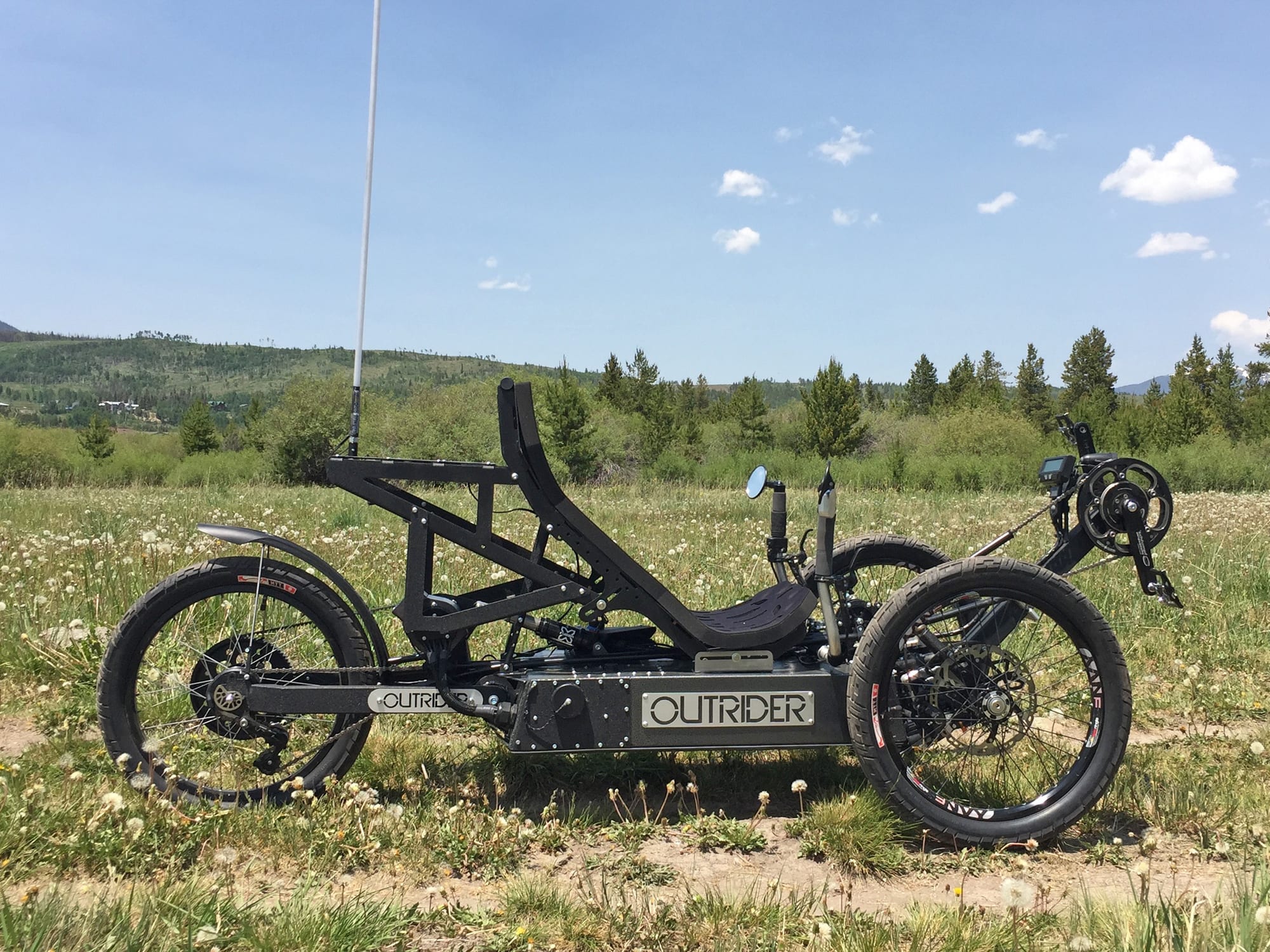
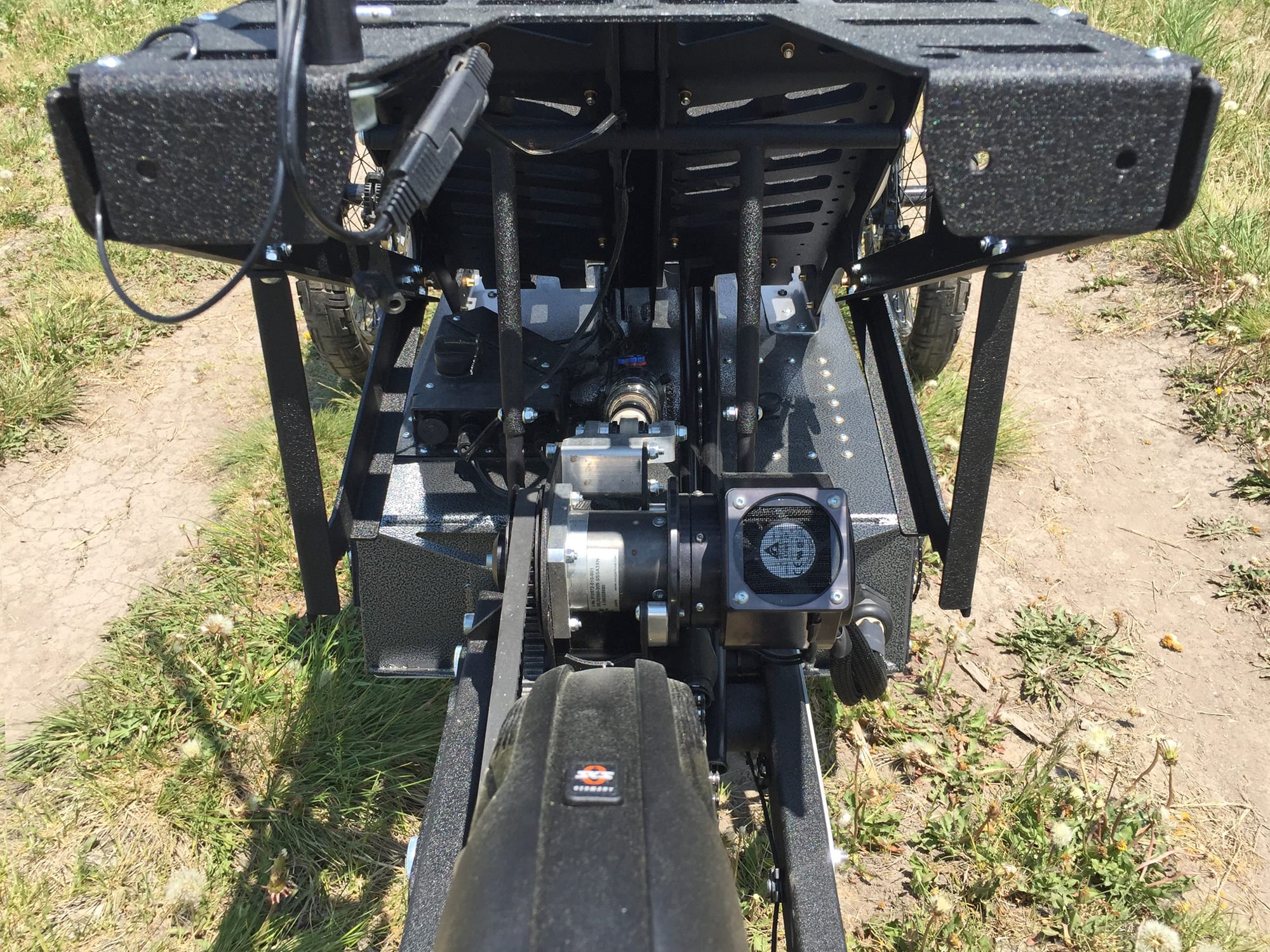
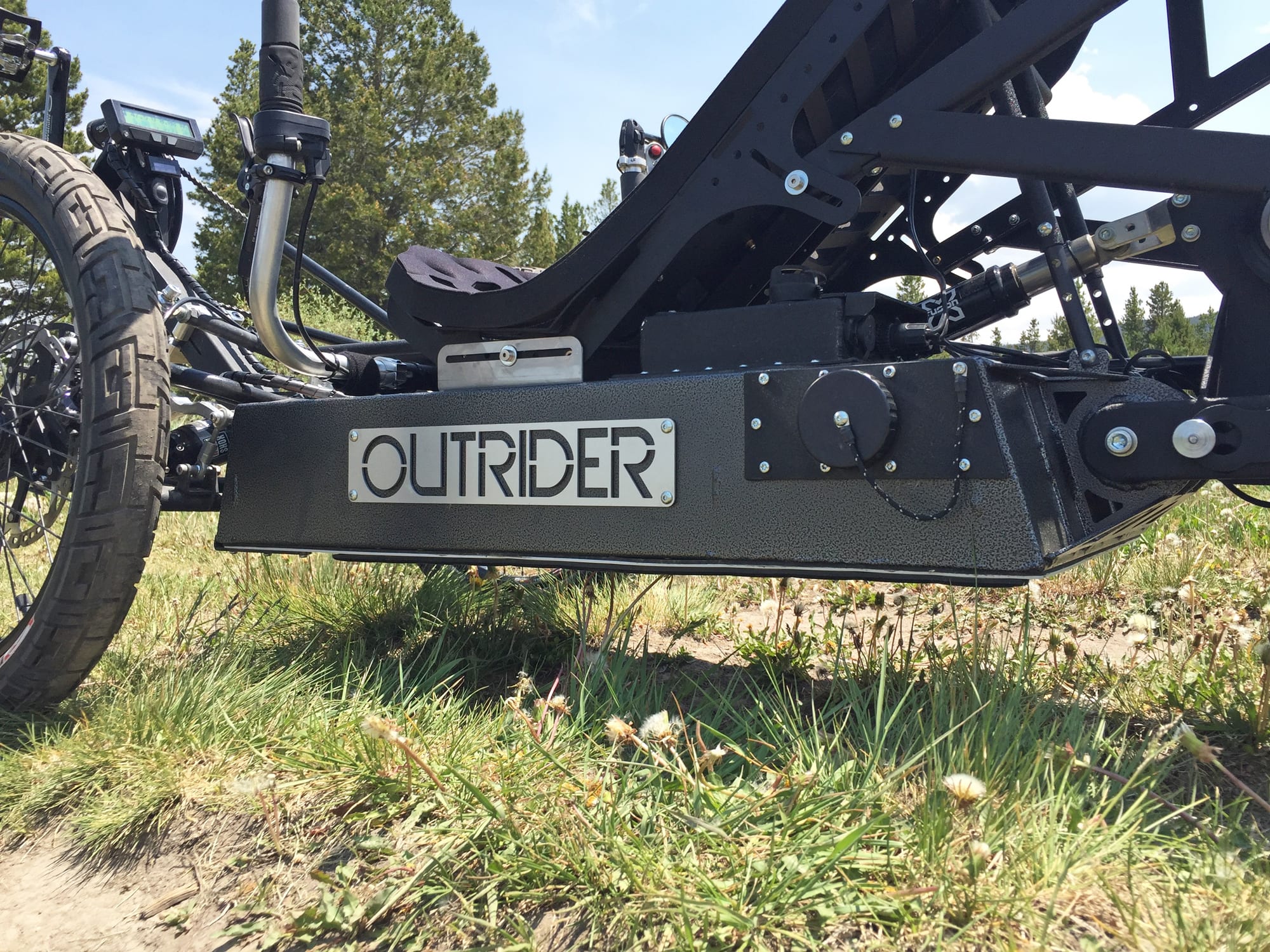
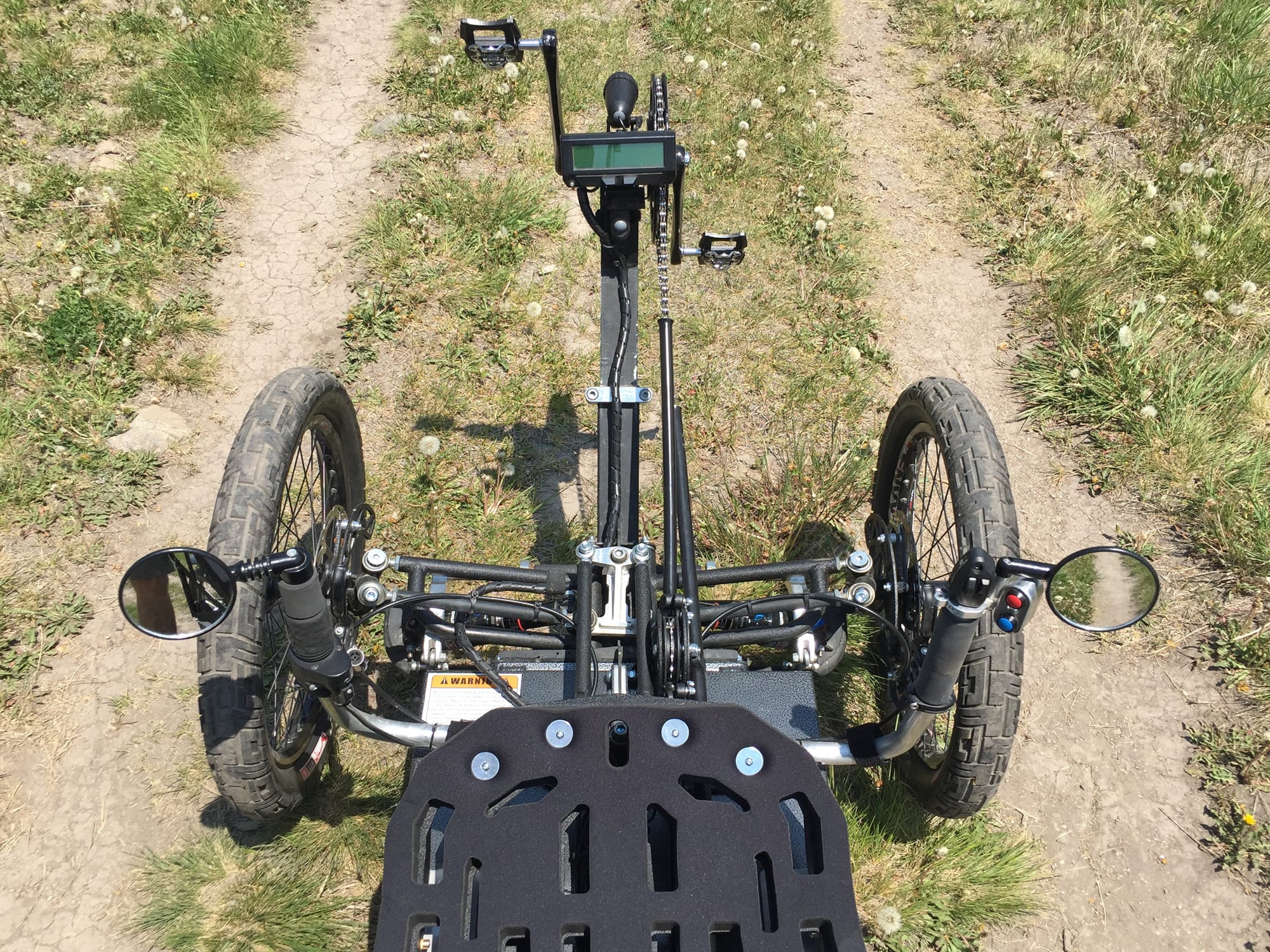


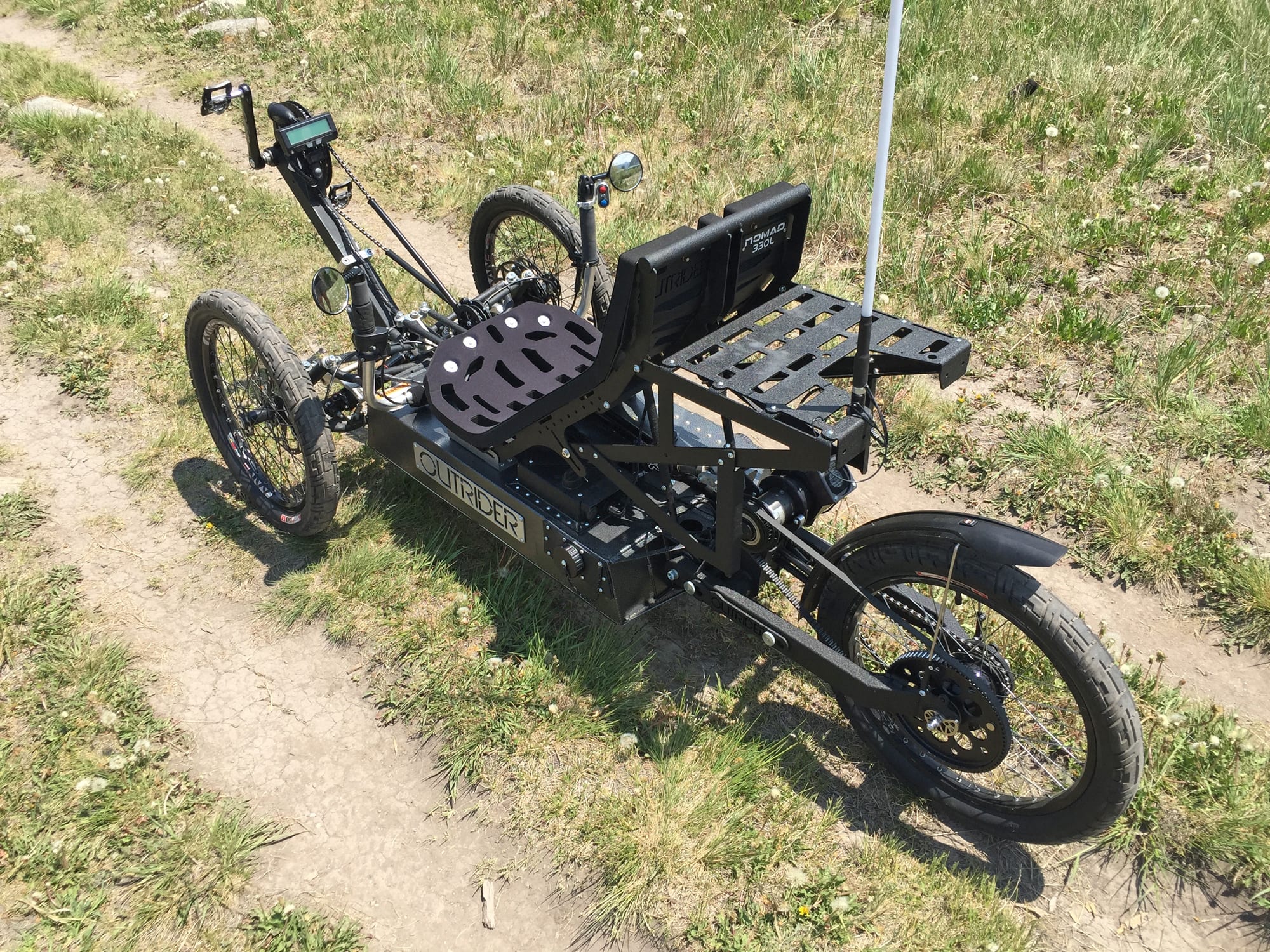
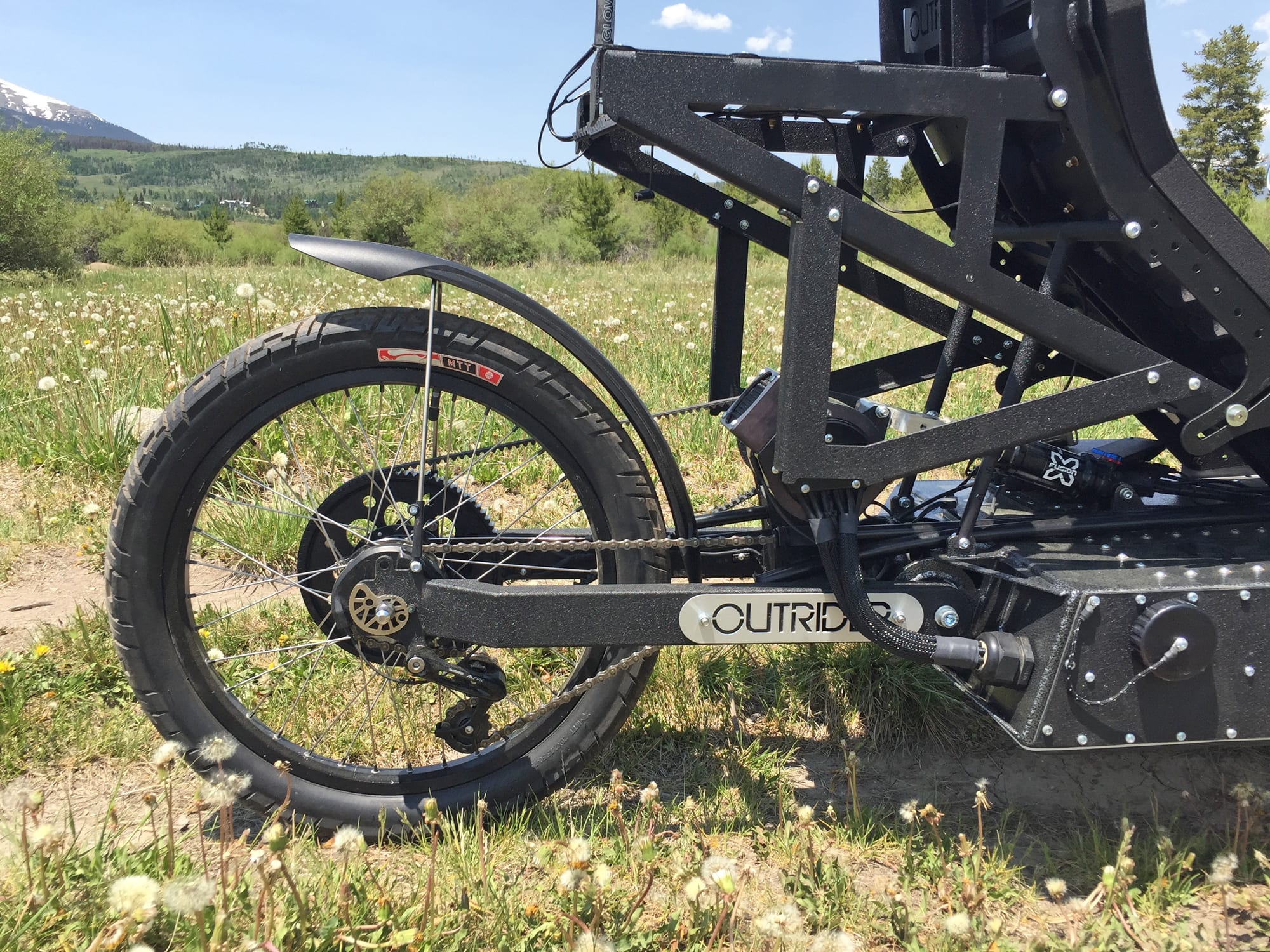

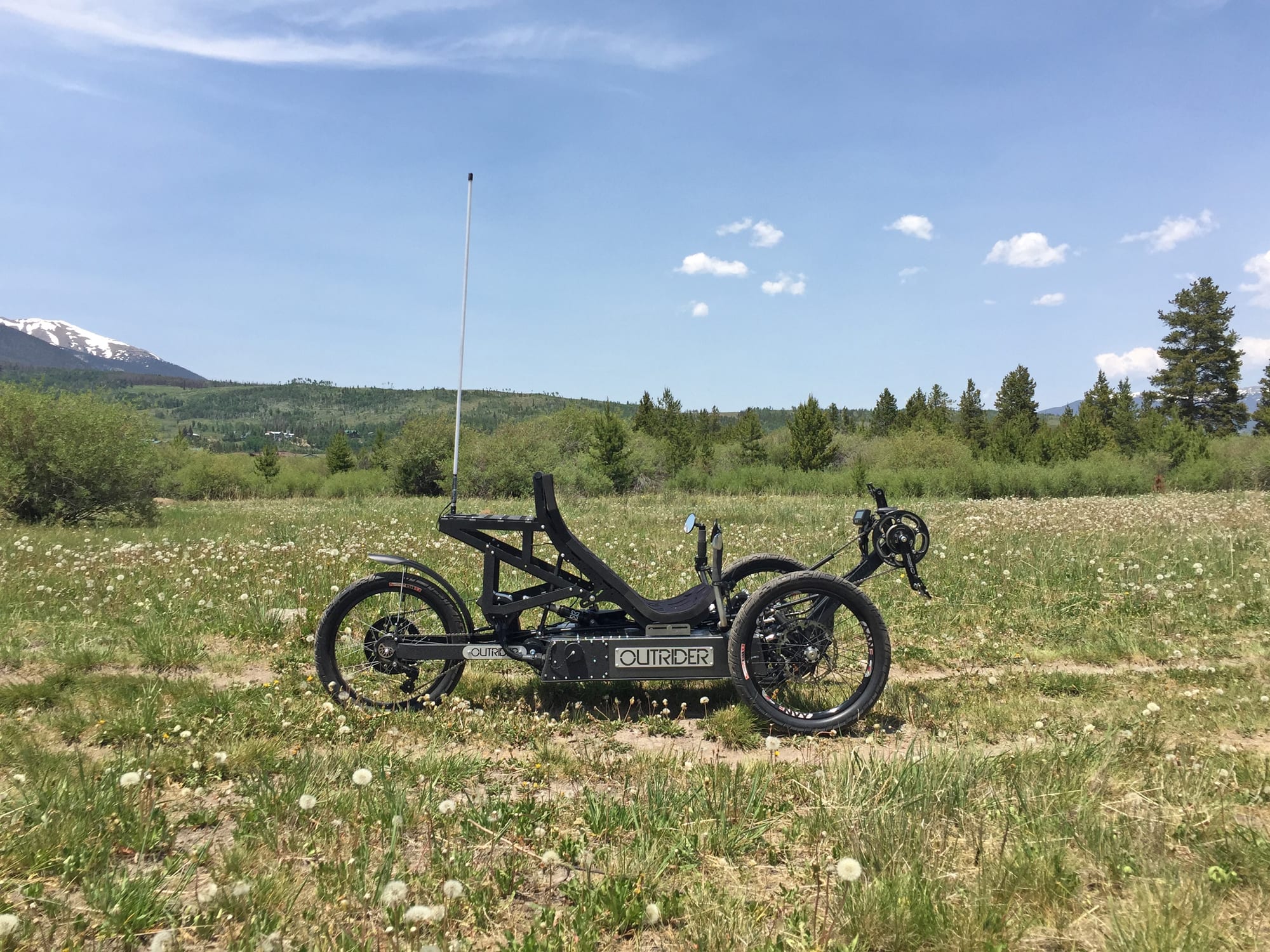


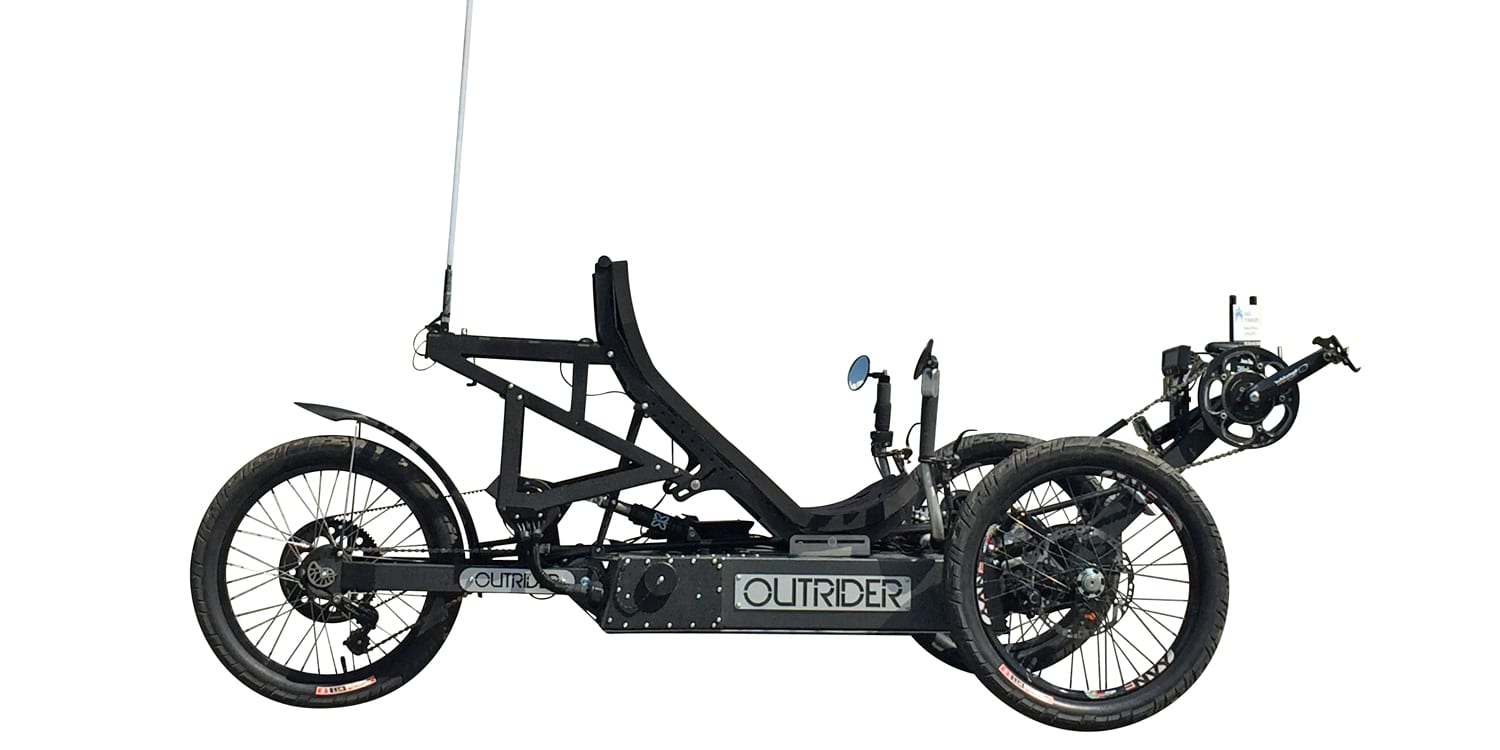
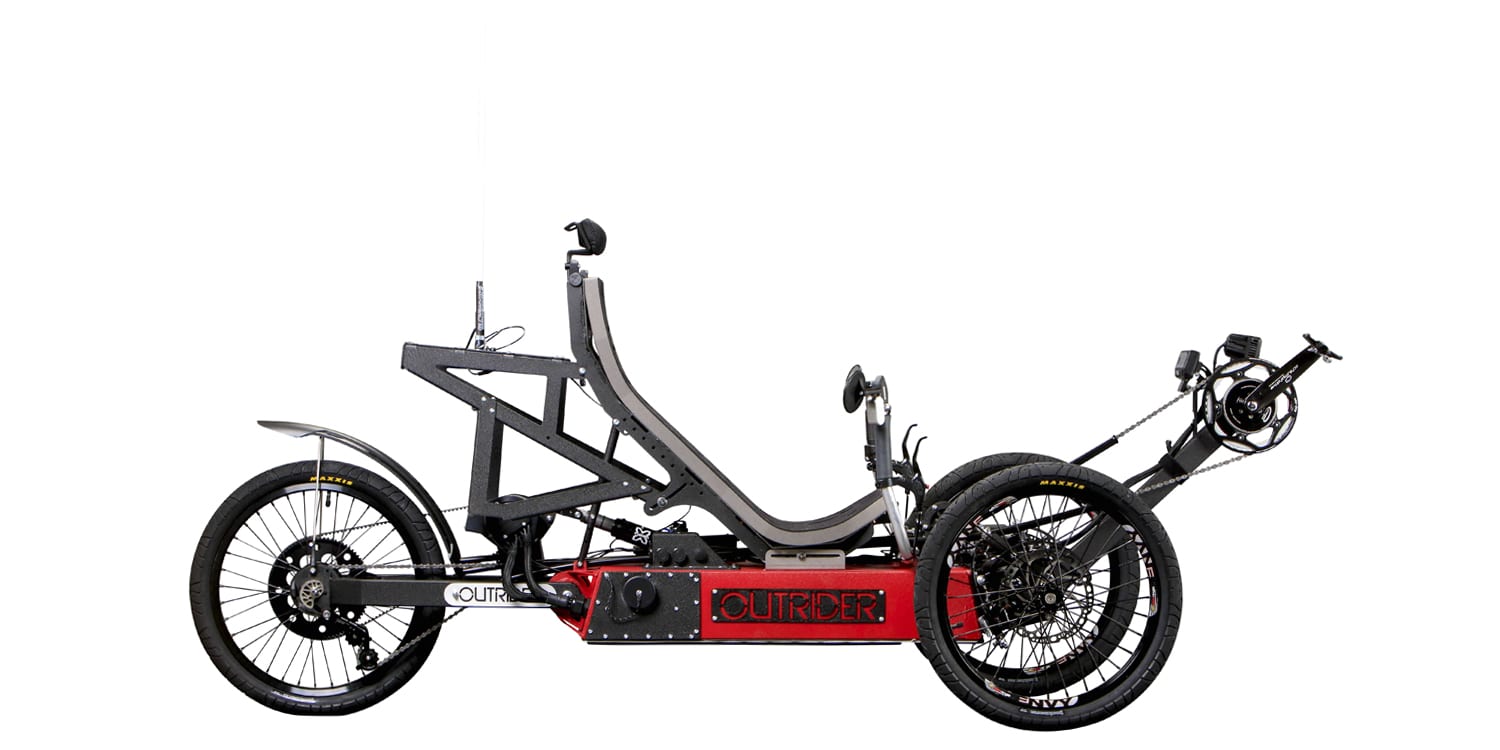
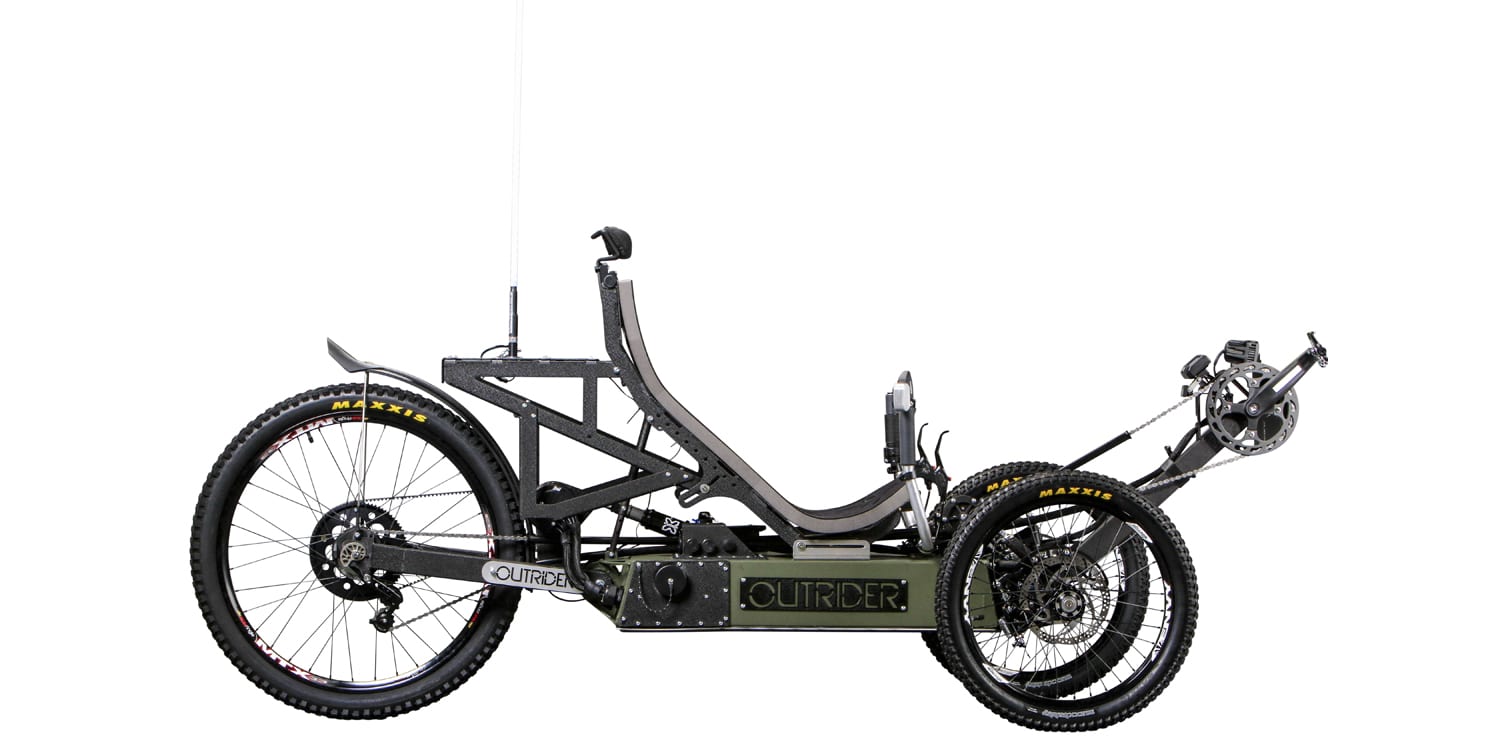
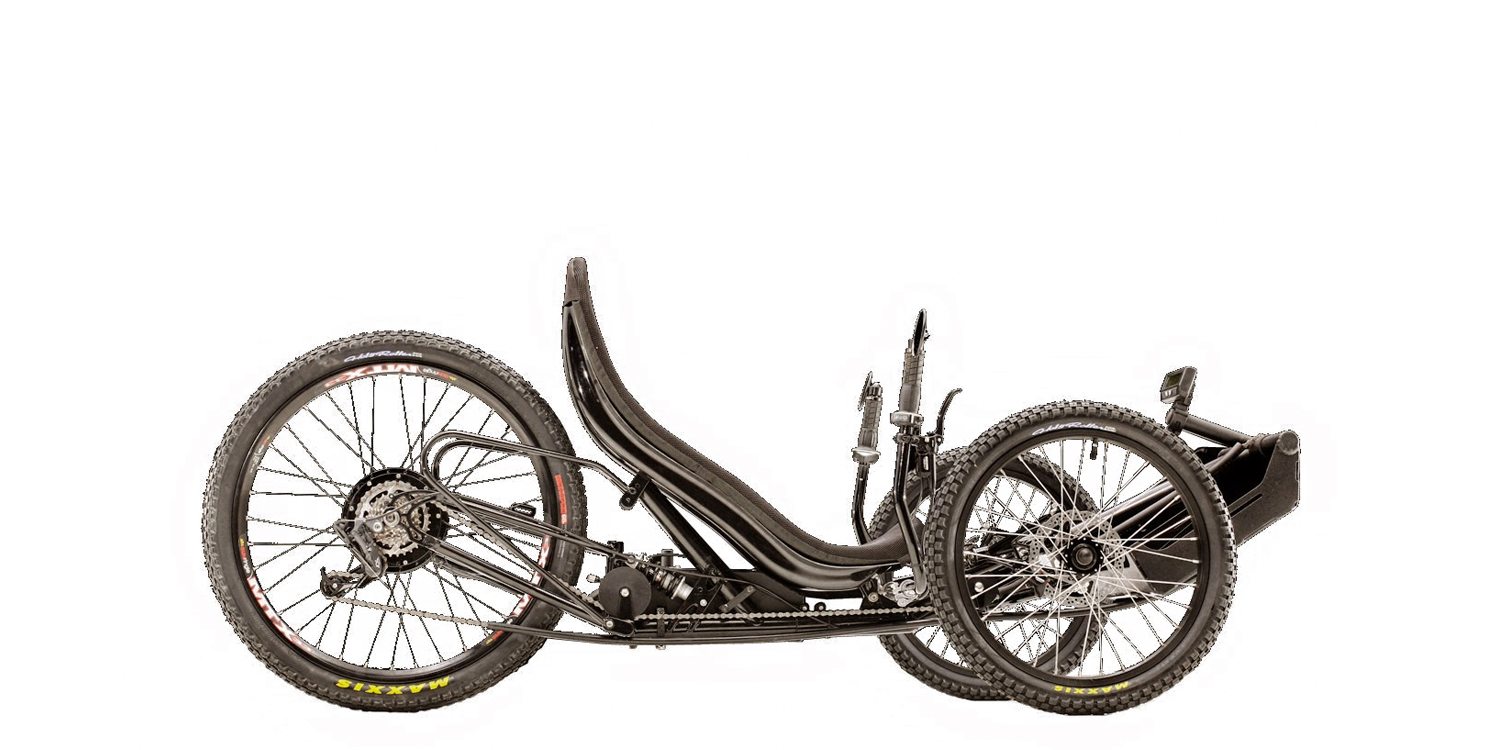
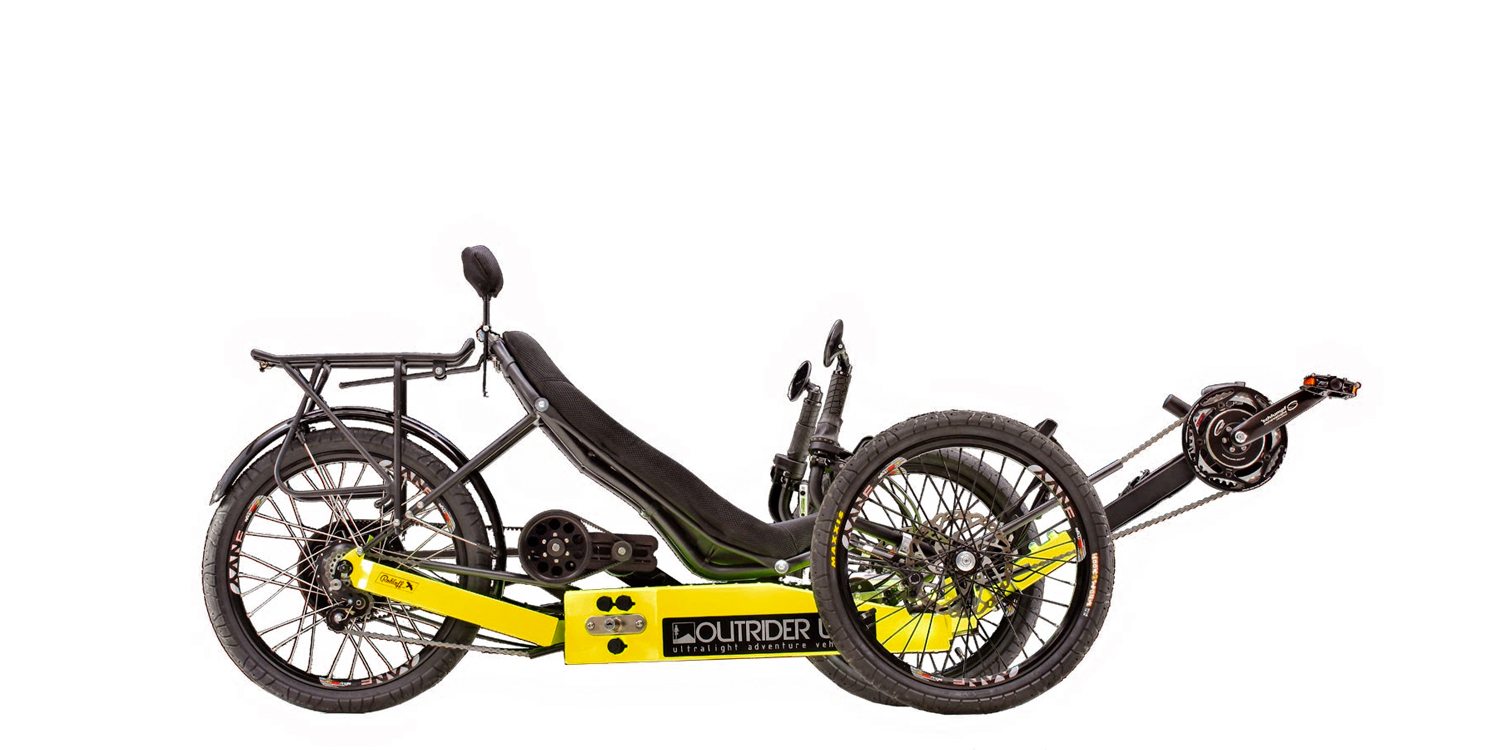
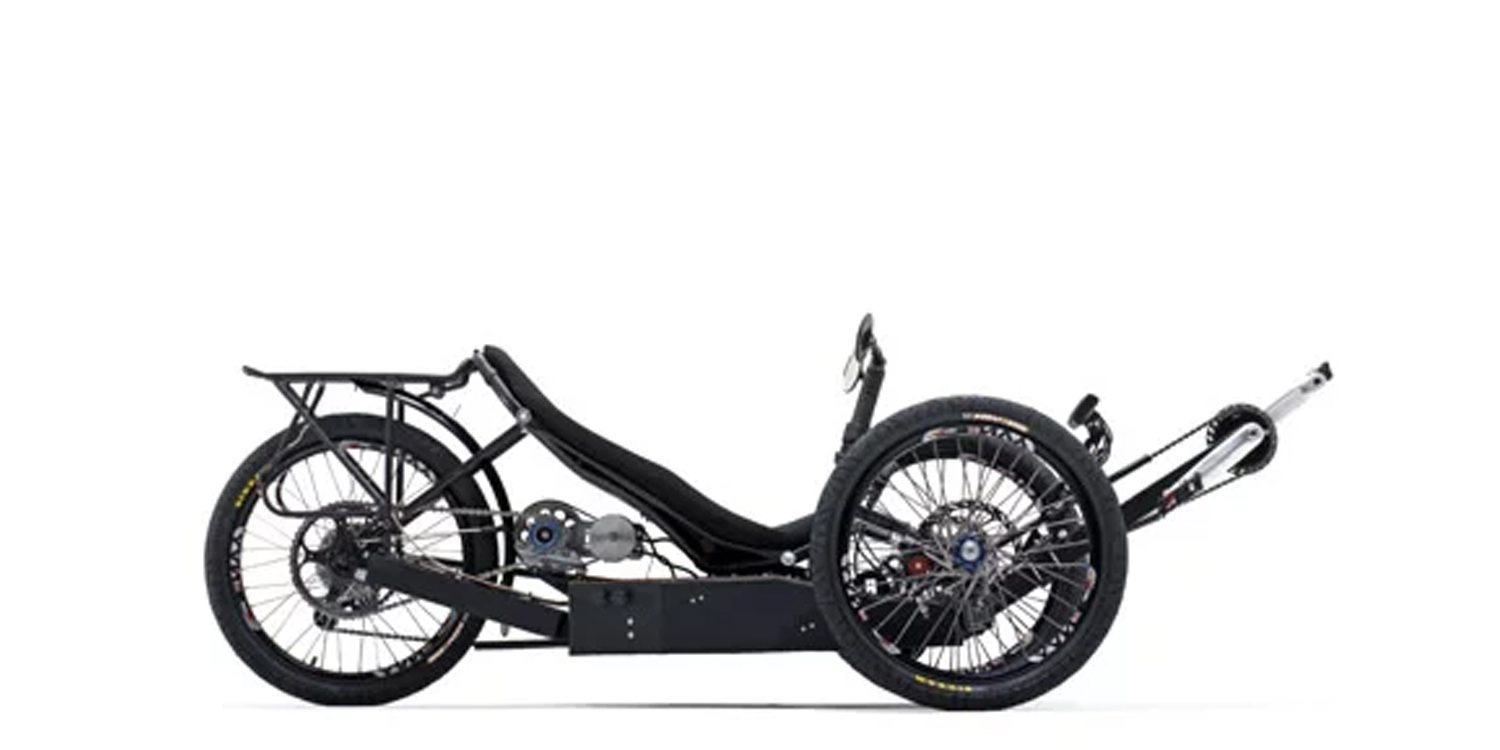
Reader Interactions